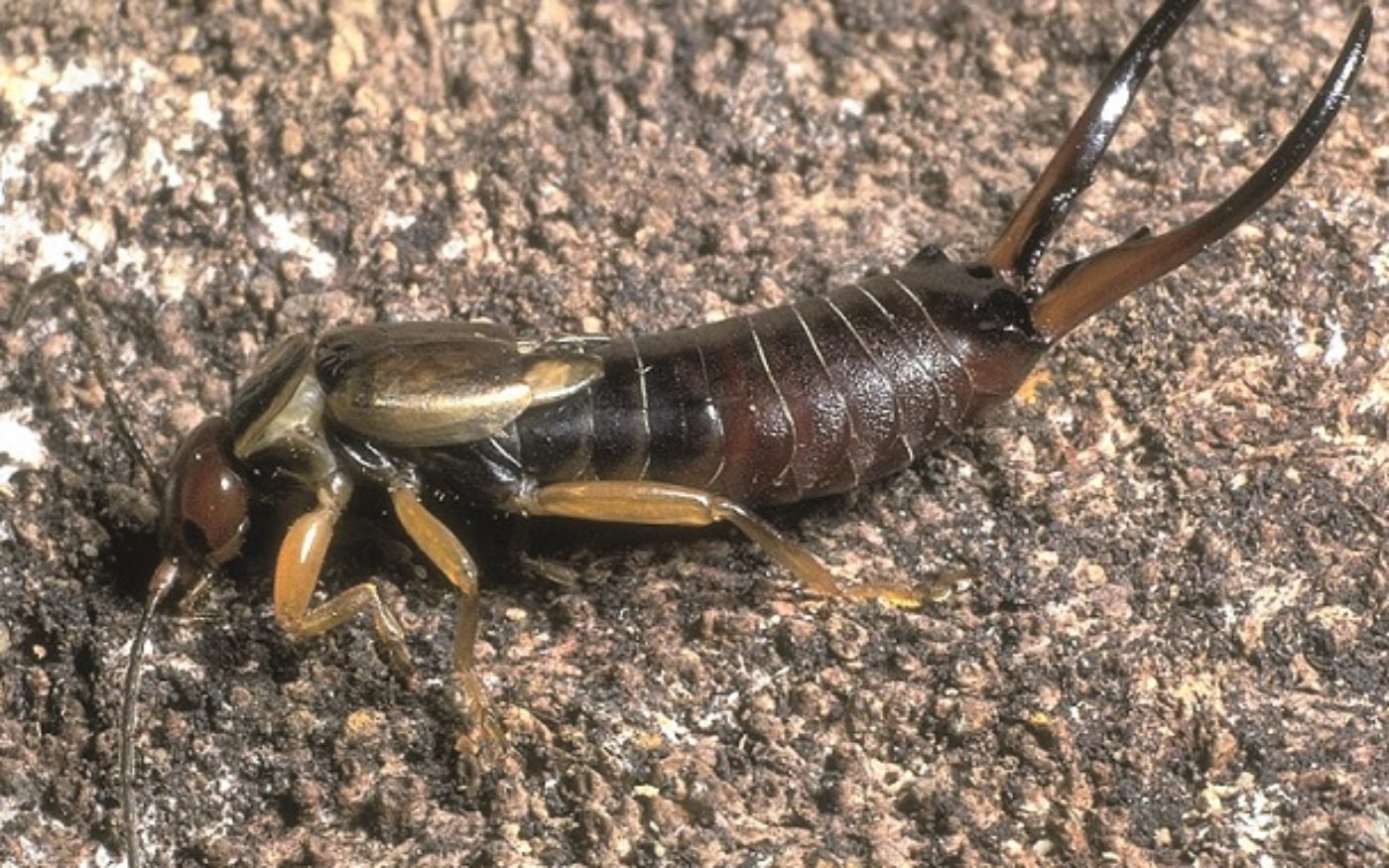Order
Earwigs
Earwigs are well-known and distinctive insects, with thread-like antennae, short leathery wing-cases at the front of the slender clearly-segmented abdomen, and a pair of conspicuous pincers at their tail end. There are just seven species of earwigs in the UK and the most frequently seen is the Common Earwig.
What do they look like?
The adult Common Earwig is 11-16 mm long. Its legs, thorax and wing-cases are yellowish brown, but the head and the abdomen are dark brown. The pincers on the tip of the abdomen are curved in males but almost straight in females. The membranous hind wings are folded tightly underneath the wing cases: these wings are functional but the Common Earwig rarely flies. The nymphs of the Common Earwig resemble the adults, but are (of course) smaller.
Where do they live?
During the day, Common Earwigs hide in dark sheltered places such as under stones, flower pots, logs or loose bark on trees. They can be found by turning over likely stones and pots or by searching in corners of garden sheds. They are active at night, when they can often be seen by examining plants by torchlight on mild evenings.
Where can they be found?
The Common Earwig occurs throughout Europe. It can be found in most gardens in Britain and Ireland.
When can you see them?
Common Earwigs are most often seen between April and October.
Life cycle
There is one generation per year. Common Earwigs mate in the autumn and the female digs a hole in the soil, where she lays 30-50 eggs. Whereas most insects abandon their eggs, female earwigs stay and guard their brood until after the nymphs have hatched in the spring. The nymphs shed their outer skin four times between spring and mid-summer as they grow and develop into adults.
What do they do?
Earwigs are sometimes regarded as garden pests because they eat the young leaves and petals of plants such as clematis, dahlia and chrysanthemum. However, they also feed on small insects, such as greenfly, so they can be beneficial.
Did you know?
There is no truth in the old European superstition that, while a person slept, an "ear" wig would crawl into their ear, bore into their brain and lay its eggs! It is not known which came first, the name or the superstition.

